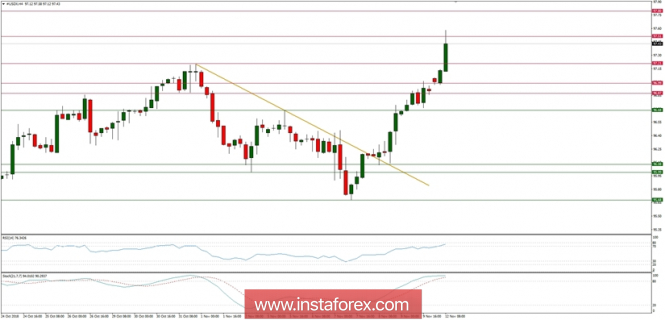The Fed confirmed its plan to raise interest rates by 25 basis points in December, and then two more levels by mid-2019 due to the economic recovery and rising wage pressure. The USD also benefited from the wider departure of investors from more risky assets due to tensions in trade between the US and China, the economic slowdown in China, uncertainty and a dispute between Rome and the European Union regarding Italy's plan for large budget expenditures and a wide fiscal deficit.
The dollar index was stable throughout the previous week, reflecting on the mid-term (US) election results. Looking ahead, the movement will be driven by developments around the Italian budget and Brexit policy. Moreover, USD gained 0.1% in relation to the Japanese yen (USD / JPY), which on Monday was trading at 113.98, or nearly 6-week high at 114.08. Investors prefer USD to JPY due to divergent monetary policy of FED and Bank of Japan (BoJ). While the Fed is on track to raise interest rates, it is expected that the BoJ will maintain its monetary policy at a very low level in the face of slow growth and inflation. The growing difference in interest rates between US and Japanese bonds made the dollar a more attractive choice than the yen, which is often used as the currency for financing conditional transactions.
Let's now take a look at the DXY technical picture at the H4 time frame. The dollar index in relation to other major currencies increased by 0.1% on Monday to 97.02, or slightly above the 16-month-old October high. The local high was made at the level of 97.58 and momentum is still strong and positive, so the next target is seen at the level of 97.80. DXY in effect strengthens four weeks in a row, gaining 0.4 percent last week.

